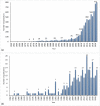Dried Blood Spots technology for veterinary applications and biological investigations: technical aspects, retrospective analysis, ongoing status and future perspectives
- PMID: 35771305
- PMCID: PMC9244892
- DOI: 10.1007/s11259-022-09957-w
Dried Blood Spots technology for veterinary applications and biological investigations: technical aspects, retrospective analysis, ongoing status and future perspectives
Abstract
Dried Blood Spots (DBS) technology has become a valuable tool in medical studies, however, in veterinary and biological research DBS technology applications are still limited. Up-to-date no review has comprehensively integrated all the evidence existing across the fields, technologies and animal species. In this paper we summarize the current applications of DBS technology in the mentioned areas, and provide a scope of different types of dried sample carriers (cellulose and non-cellulose), sampling devices, applicable methods for analyte extraction and detection. Mammals, birds, insects and other species are represented as the study objects. Besides the blood, the review considers a variety of specimens, such as milk, saliva, tissue samples and others. The main applications of dried samples highlighted in the review include epidemiological surveys and monitoring for infections agents or specific antibodies for disease/vaccination control in households and wildlife. Besides the genetic investigations, the paper describes detection of environmental contaminants, pregnancy diagnosis and many other useful applications of animal dried samples. The paper also analyses dried sample stability and storage conditions for antibodies, viruses and other substances. Finally, recent developments and future research for DBS technology in veterinary medicine and biological sciences are discussed.
Keywords: Dried blood spots; Dried matrix spots; Epidemiological surveys; Genetic investigations; Sero-surveillance; Veterinary diagnostics.
© 2022. The Author(s), under exclusive licence to Springer Nature B.V.
Conflict of interest statement
The authors have no relevant financial or non-financial interests to disclose.
Figures
Similar articles
-
The use of mass spectrometry to analyze dried blood spots.Mass Spectrom Rev. 2016 May-Jun;35(3):361-438. doi: 10.1002/mas.21441. Epub 2014 Sep 22. Mass Spectrom Rev. 2016. PMID: 25252132 Review.
-
Diagnostic analysis of veterinary dried blood spots for toxic heavy metals exposure.J Anal Toxicol. 2013 Sep;37(7):406-22. doi: 10.1093/jat/bkt048. Epub 2013 Jul 16. J Anal Toxicol. 2013. PMID: 23861340
-
Current and future applications of dried blood spots in viral disease management.Antiviral Res. 2012 Mar;93(3):309-21. doi: 10.1016/j.antiviral.2011.12.011. Epub 2012 Jan 5. Antiviral Res. 2012. PMID: 22244848 Review.
-
A novel method for extracting nucleic acids from dried blood spots for ultrasensitive detection of low-density Plasmodium falciparum and Plasmodium vivax infections.Malar J. 2017 Sep 18;16(1):377. doi: 10.1186/s12936-017-2025-3. Malar J. 2017. PMID: 28923054 Free PMC article.
-
Evaluation of a novel dried blood spot collection device (HemaSpot™) to test blood samples collected from dogs for antibodies to Leishmania infantum.Vet Parasitol. 2014 Sep 15;205(1-2):338-42. doi: 10.1016/j.vetpar.2014.07.031. Epub 2014 Aug 12. Vet Parasitol. 2014. PMID: 25129335
Cited by
-
The Suitability of Dried Blood Spot Sampling for Pharmacokinetic Studies in Veterinary Medicine.Vet Sci. 2025 May 18;12(5):488. doi: 10.3390/vetsci12050488. Vet Sci. 2025. PMID: 40431581 Free PMC article.
-
A Laboratory Protocol for Routine Therapeutic Drug Monitoring of Beta-Lactams Antimicrobials in Horses and Dogs.Antibiotics (Basel). 2025 Apr 9;14(4):390. doi: 10.3390/antibiotics14040390. Antibiotics (Basel). 2025. PMID: 40298550 Free PMC article.
-
Optimization of Total DNA Extraction from Dried Blood Samples.Biochem Genet. 2025 Aug;63(4):3744-3757. doi: 10.1007/s10528-024-10882-7. Epub 2024 Jul 12. Biochem Genet. 2025. PMID: 38995529
References
Publication types
MeSH terms
LinkOut - more resources
Full Text Sources


